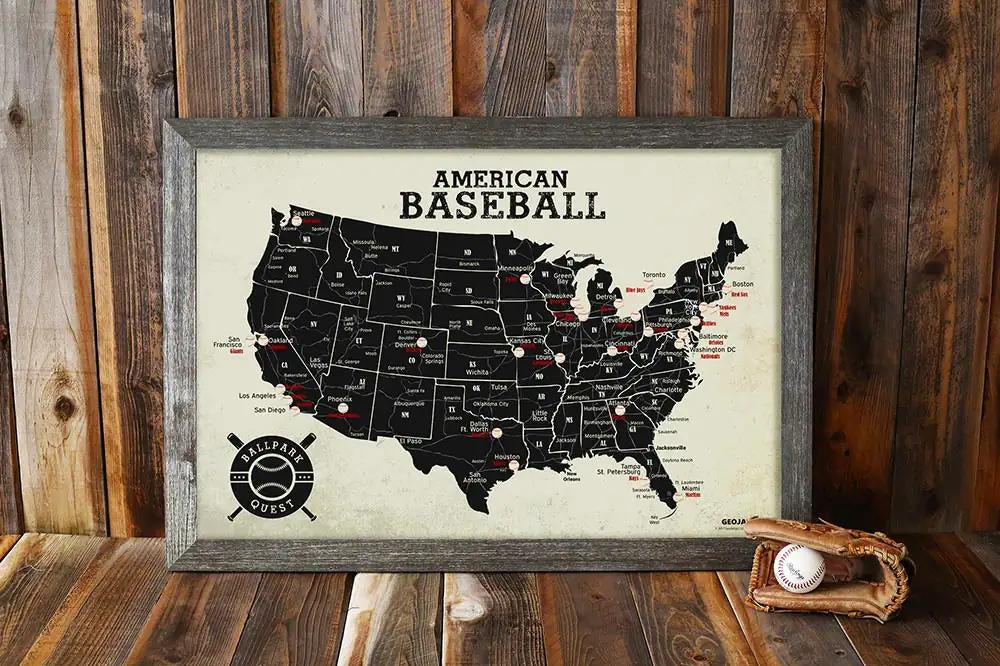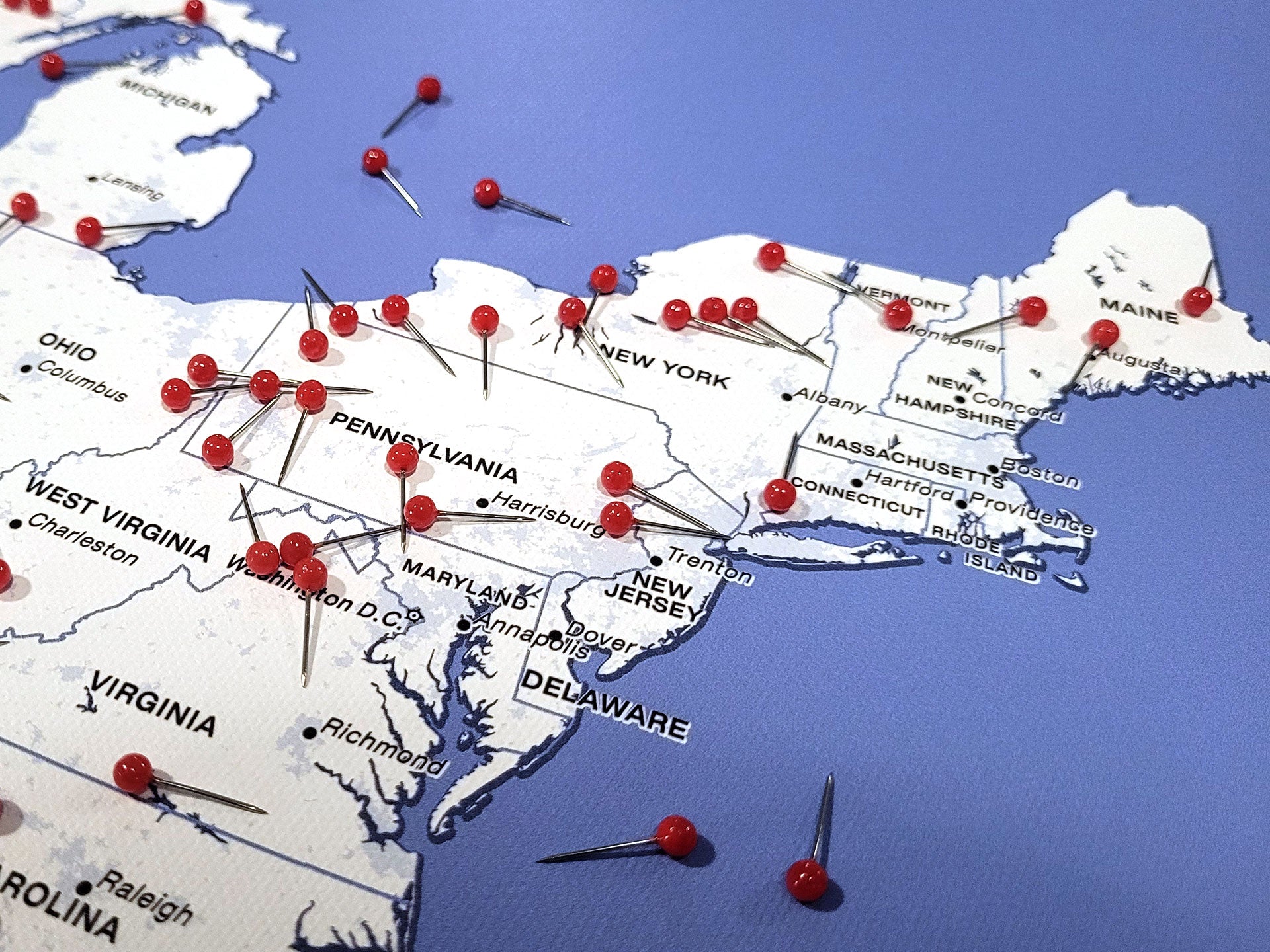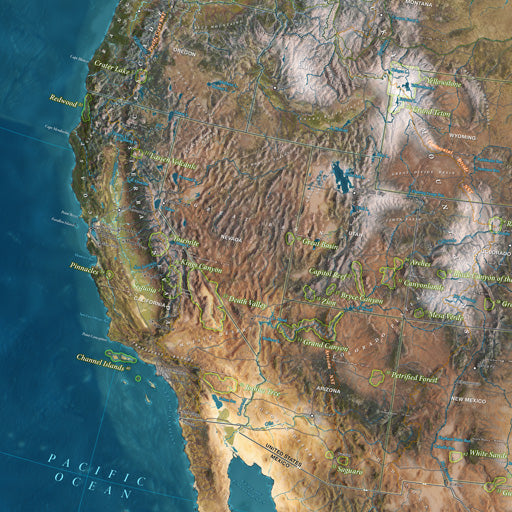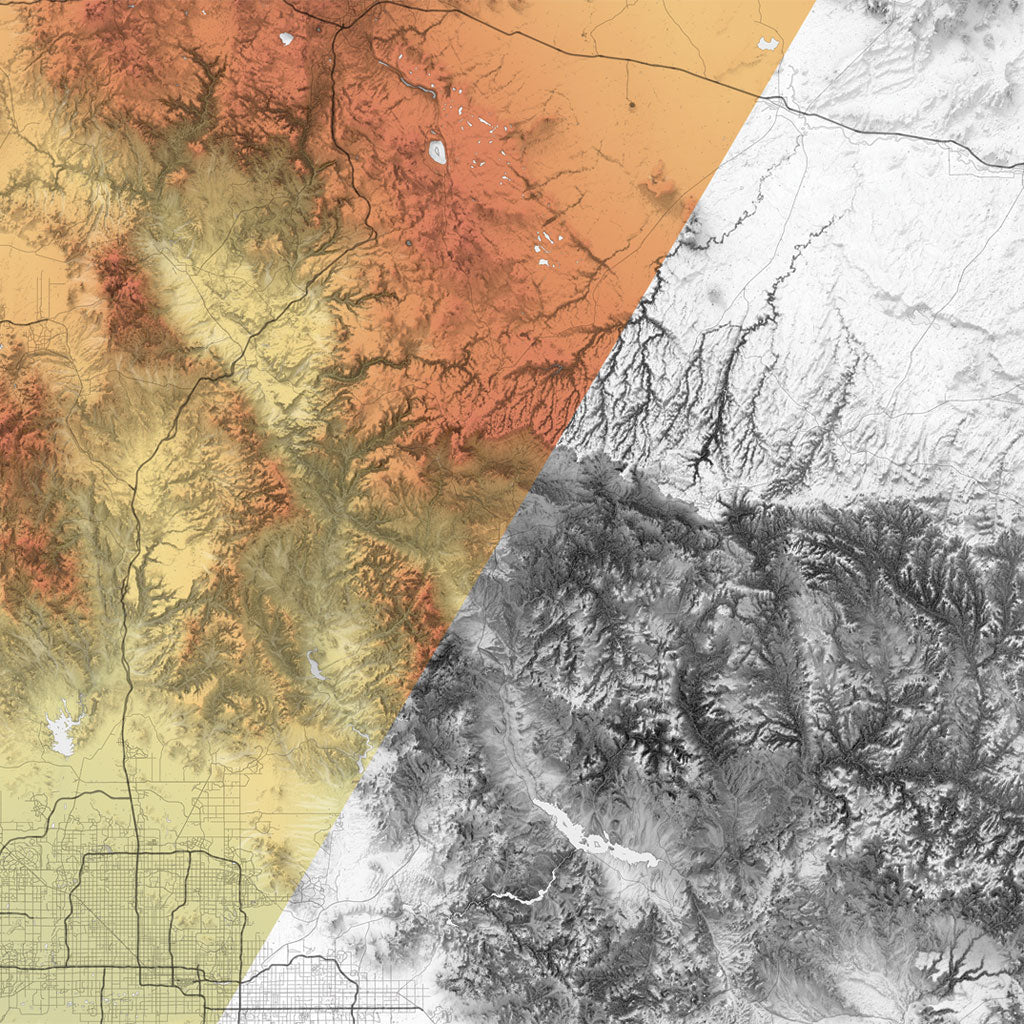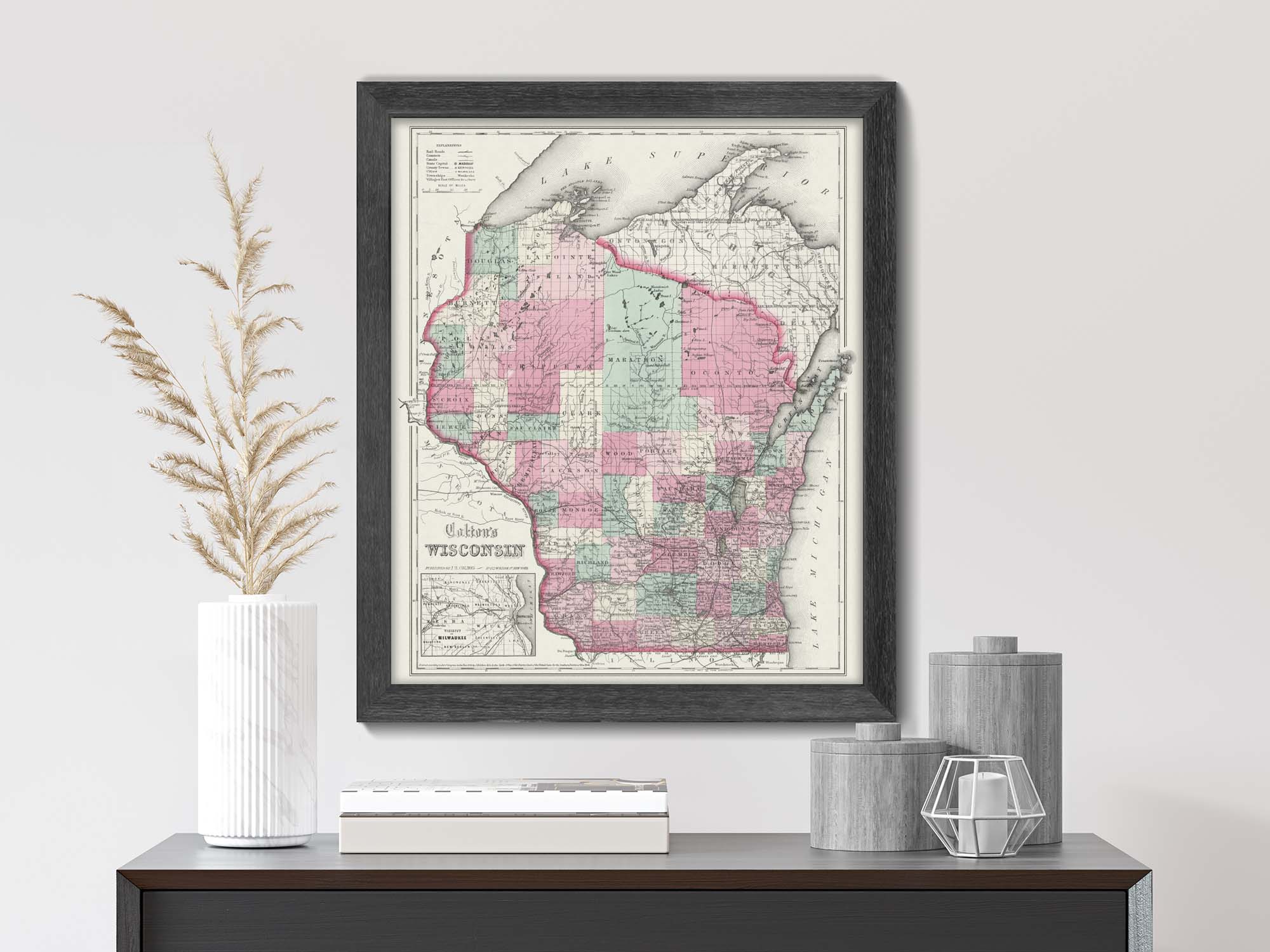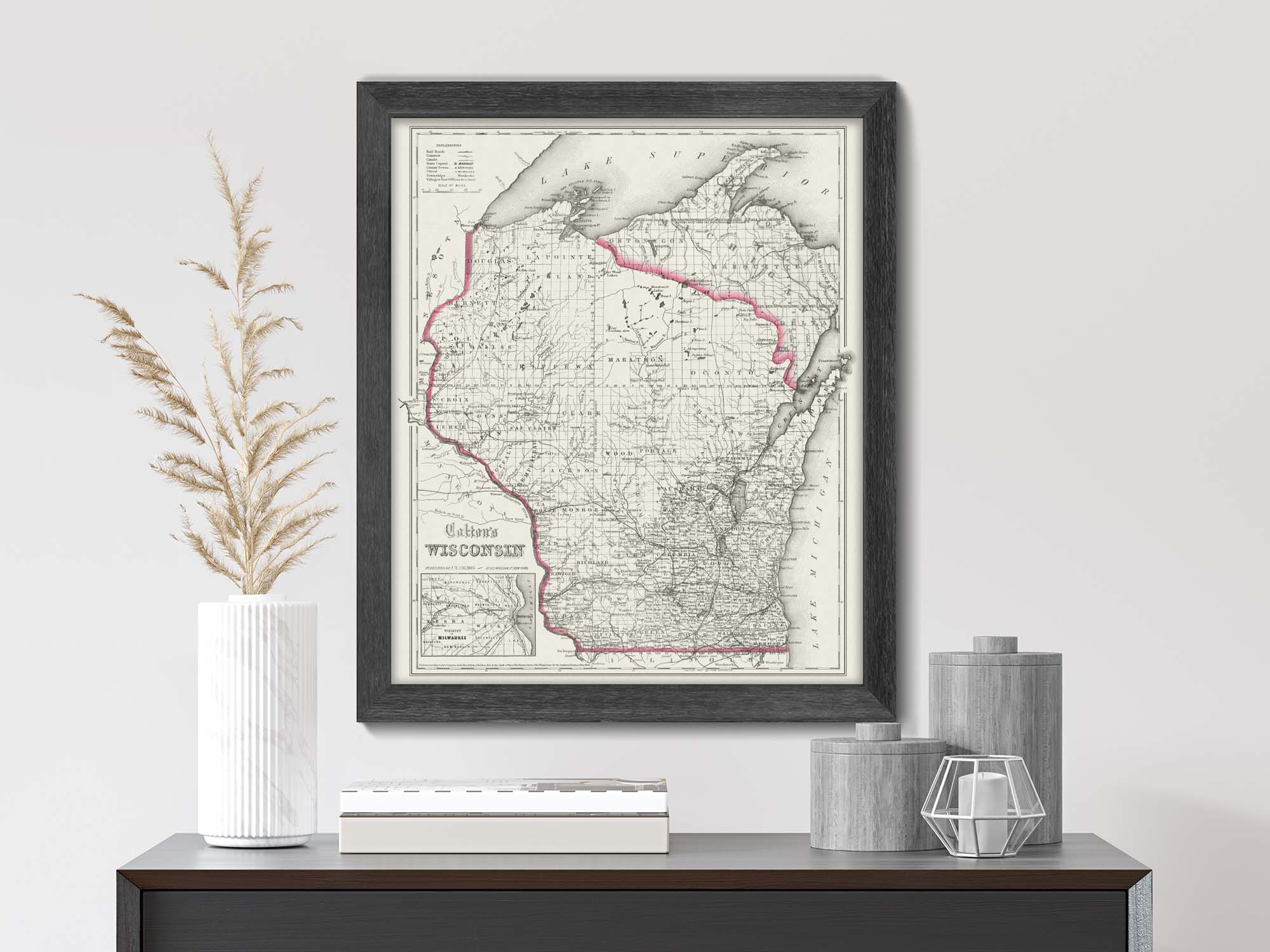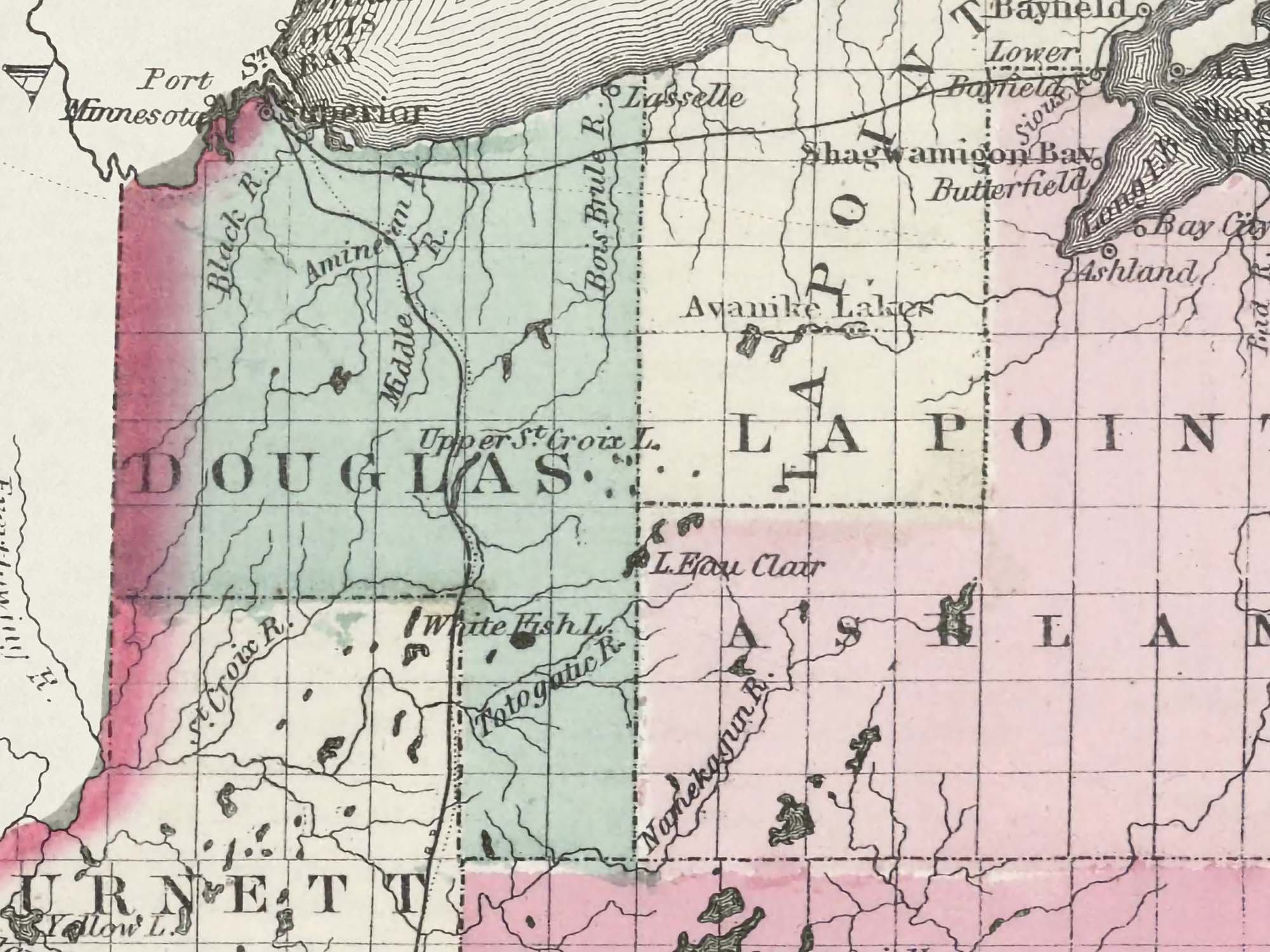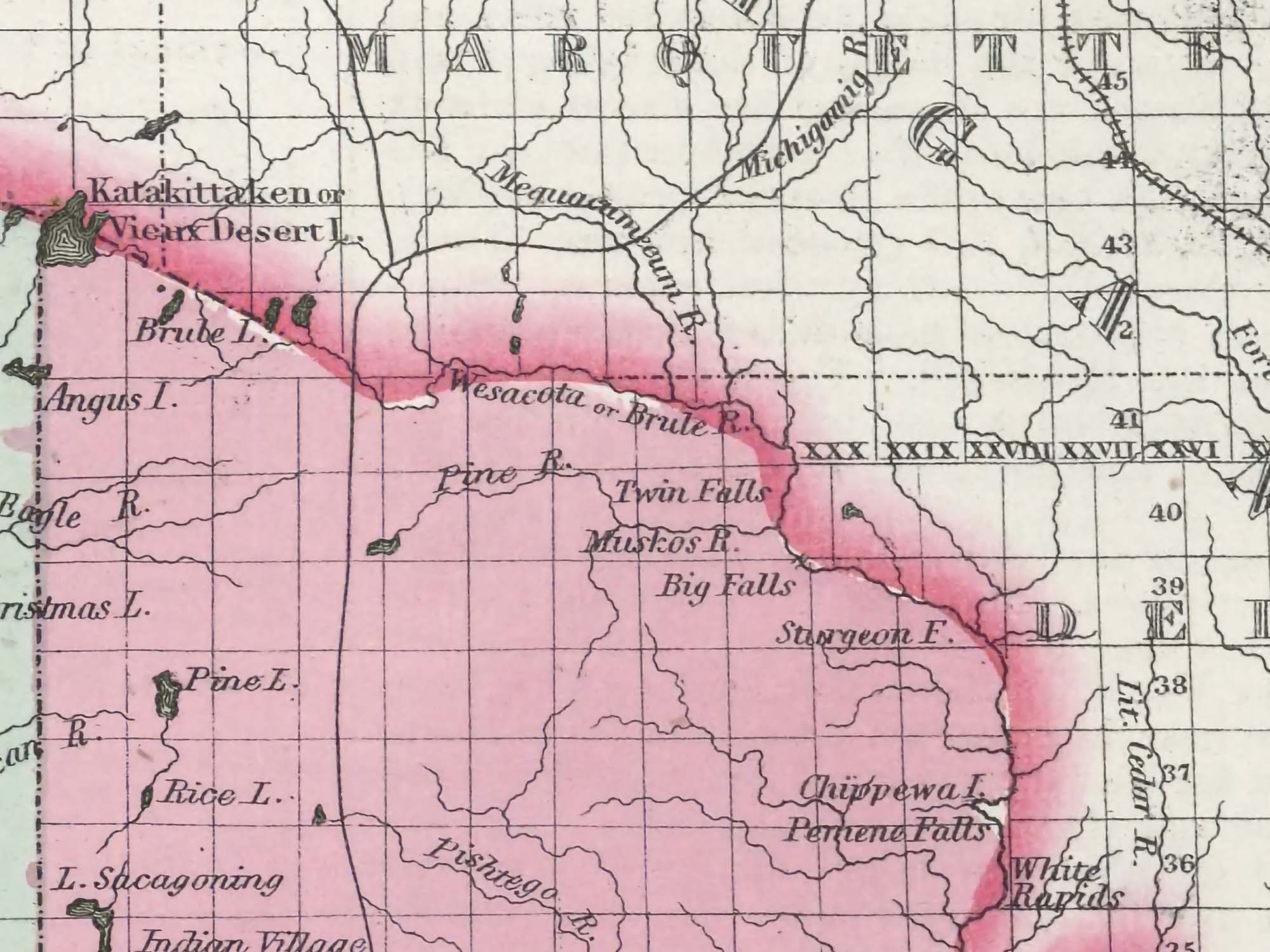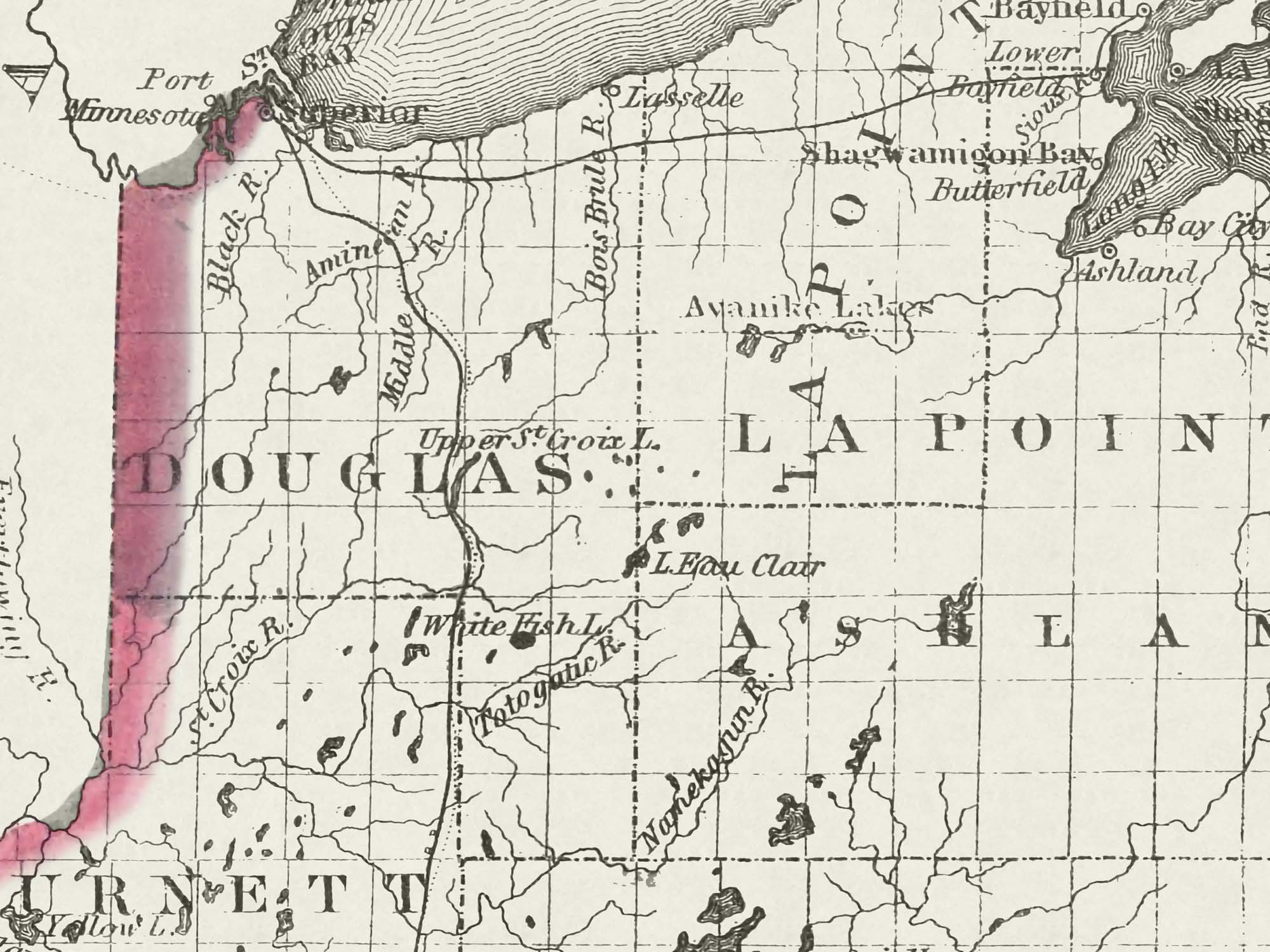This map is a faithful reproduction of the original 1850 map restored to its former glory using the latest digital imaging technology.
Vintage State of Wisconsin Map
Standard maps will enter production right away, within the next business day. Larger orders may take more time.
All push pin board maps (framed or canvas wrap) include push pins, are easy to hang, and ship free in the continental US. We'll select the optimal shipping method for fast delivery.
For personalized maps we collaborate closely to guarantee satisfaction. Expect a proof to be sent to you. Your swift responses will facilitate the production and shipping process.
If there are any problems with your map we will take care of you. Returns for all maps are straightforward and hassle-free.
For personalized maps, engaging with the email proofs we send ensures that the final product meets your expectations precisely.
We have 30+ years of cartography experience, meticulously craft each order by hand to ensure excellence, and 100% guarantee your satisfaction. We produce maps that are built to last, with state of the art production and archival quality materials.
Customize with quotes, legends, or dedications using "Personalize Map" options to craft your masterpiece map. Or reach out to us if you don't see the option you want.
We collaborate with you from design to approval of your proof so that you are 100% happy before we print and ship.
Our excellent customer service is always open to you.
Restored 1850's Map
Fine Art Quality
Impressively produced with Archival Inks, Rich Color Depth, and clear and vivid labels. We use premium matte paper.
Expert Craftsmanship
We prepare the map using Fine Art Giclee production techniques. We roll the map in a sturdy tube for shipping to provide a crease-less piece of art.
Vintage State of Wisconsin Map
- Description
- Specs & Construction
About the Map: Explore the geographic history of the state of Wisconsin in this historic map. This map is part of our vintage USA State Map Collection showing the geography of the states in the 1850-1860s and the time of the Civil War.
Restoration: The map is a reproduction of the original map meticulously restored to its former glory using the latest digital imaging technology. Using this technology, we carefully restored the colors, torn edges, creases, smeared writings and more. We enhanced features while keeping the original character and design of the map.
This map is unframed, sold as an art print. Frames are shown for illustration ONLY.
Geographic Details: This historic map shows many details of towns, roads, railroads, and waterways in the 19th century of the United States.
Shows historic cities such as Milwaukee, Madison, Green Bay and more!
Explore the historic boundaries of the cities, counties, and states that have changed over the years. Discover physical changes in the geography - such as former lakes and canals used for transportation and agriculture.
Available Sizes: For an impressive display and maximum readability, choose the largest size available.
Smaller size prints make excellent wall art in groups. Please note that there is no guarantee that small text will be legible in print.
Great Gift For: Interior Designs, Teachers, History Buffs, Anniversaries, Birthdays, Friends, Family, and many more!
Production and Shipping Times: The amount of time it takes for your map to arrive depends on where you live and how fast you approve the proof if you’ve ordered a custom map. See Production & Shipping.
Quality and Guarantee: We stand behind our work and guarantee the construction and quality. Contact us if you have any problems with your map and we will coordinate to ensure you are very happy with your purchase.
Materials and Production: This reproduction is printed on Fine Art Museum Quality Paper with giclée inks. The thick paper is archival quality and acid-free with vivid color definition.
Paper details:
- 10 mil thick
- 230 gsm weight
- Museum Quality Matte finish
Made in the USA by a USA Small Business and Professional Geographer & Cartographer.
Shipped in a tube and rolled to eliminate creases.
Why choose GeoJango Maps
- We have a lifelong passion for maps, backed by 30+ years of cartography experience and Master's Degrees in Geographic Information Systems (GIS) from Penn State University and Environmental Science from the University of South Florida.
- Our incredible investment into the design of our maps results in unparalleled detail that matters: they will educate you, and grow with you as you travel the world and track your travels—where other maps miss the mark.
- We’ve built the leading map production studio in the USA and use exclusively USA-made materials. Each pin map is proudly crafted by hand, printed by us on the finest materials, mounted on museum-quality Gatorfoam, and carefully framed just for you.
History of the Time
The 1850s in Wisconsin: A Decade of Change and Tension
The 1850s were a pivotal decade in the history of Wisconsin, marked by significant social, economic, and political changes. The state, which had only recently achieved statehood in 1848, was still a relatively young and growing entity. During this period, Wisconsin grappled with issues related to immigration, industrialization, and the looming specter of the Civil War. In this exploration of the 1850s in Wisconsin, we delve into the events and developments that shaped the Badger State during this transformative decade.
The Immigrant Wave:
The 1850s saw a massive influx of immigrants to Wisconsin, transforming the state's demographic landscape. Irish, German, Norwegian, and Polish immigrants, among others, settled in various regions of Wisconsin, bringing their unique cultures and traditions. The lure of economic opportunities, fertile land, and religious freedom drew these newcomers to the state.
The Irish, escaping the devastating Great Famine, settled predominantly in cities like Milwaukee, where they played a vital role in building the city's infrastructure. Meanwhile, German immigrants established communities throughout the state, contributing to Wisconsin's reputation as a bastion of German culture in America. Norwegians and Poles also made their mark on Wisconsin, with Norwegian immigrants concentrating in rural areas and Poles in Milwaukee.
Industrialization and Urbanization:
The 1850s witnessed the rapid growth of industry in Wisconsin, fueled in part by its abundance of natural resources. Milwaukee emerged as an industrial hub, with its location on Lake Michigan facilitating transportation and trade. The city's industries expanded to include brewing, tanning, and machinery production, laying the foundation for its future economic prominence.
Milwaukee's beer industry, in particular, gained recognition during this decade, thanks to the establishment of breweries like Schlitz and Pabst. The city's brewing tradition would eventually earn it the nickname "Brew City."
The Underground Railroad:
The issue of slavery and the movement to abolish it cast a long shadow over the 1850s. While Wisconsin was far removed from the slave-holding South, it played a role in the national debate over slavery, particularly through its involvement in the Underground Railroad.
The Underground Railroad was a clandestine network of safe houses and secret routes used to help enslaved people escape to freedom in the North or Canada. Wisconsin was a key station on this network, with conductors and sympathizers aiding fugitive slaves on their journey. The town of Ripon, Wisconsin, was notable for its support of the Underground Railroad and its association with the founding of the Republican Party.
The Fugitive Slave Act:
The 1850s were a time of heightened tensions between the North and the South over the issue of slavery. In 1850, the United States Congress passed the Fugitive Slave Act, which required citizens of free states like Wisconsin to assist in the capture and return of escaped slaves. This law was met with resistance and defiance in Wisconsin, where many citizens harbored abolitionist sentiments.
In Milwaukee, Sherman Booth, an anti-slavery activist and newspaper editor, played a prominent role in resisting the Fugitive Slave Act. He orchestrated the rescue of Joshua Glover, a fugitive slave who had been arrested under the law. This act of civil disobedience sparked a legal battle that eventually led to Booth's arrest and imprisonment but also galvanized anti-slavery sentiment in Wisconsin.
The Wisconsin Supreme Court and the Booth Case:
The Booth case had profound implications for the state's legal and political landscape. The Wisconsin Supreme Court, led by Chief Justice Abram D. Smith, ruled in favor of Booth's actions, declaring the Fugitive Slave Act unconstitutional in Wisconsin. This decision put the state in direct conflict with federal authorities and underscored the growing tensions between North and South.
The Booth case symbolized Wisconsin's commitment to resisting what many saw as an unjust and immoral law. It also contributed to the state's reputation as a hotbed of abolitionist sentiment, which would become increasingly important as the nation hurtled toward the Civil War.
The Birth of the Republican Party:
In 1854, the political landscape of the United States underwent a seismic shift with the passage of the Kansas-Nebraska Act, which allowed for the expansion of slavery into new territories. This act further fueled anti-slavery sentiment in the North and led to the formation of the Republican Party.
Wisconsin played a pivotal role in the birth of the Republican Party. On February 28, 1854, a group of anti-slavery activists met in Ripon, Wisconsin, to form a new political party that would oppose the spread of slavery. This meeting is often cited as the founding of the Republican Party, and it laid the groundwork for the party's rise to national prominence.
The Road to the Civil War:
As the 1850s drew to a close, the nation stood on the brink of civil conflict. The tensions over slavery that had simmered throughout the decade were reaching a boiling point. Wisconsin's commitment to anti-slavery principles and its involvement in the Underground Railroad made it a key player in the unfolding drama.
When the Civil War erupted in 1861, Wisconsin contributed troops and resources to the Union cause. The state's soldiers fought in some of the war's most significant battles, including Gettysburg, Antietam, and Vicksburg. Wisconsin's support for the Union and its commitment to the abolition of slavery remained unwavering throughout the conflict.
Conclusion:
The 1850s in Wisconsin were marked by an influx of immigrants, industrialization, and a commitment to anti-slavery principles. The state's role in the Underground Railroad, the Booth case, and the founding of the Republican Party all demonstrated Wisconsin's pivotal place in the national struggle over slavery. As the decade came to a close, Wisconsin, like the rest of the nation, would be forever changed by the Civil War and the profound social and political shifts that accompanied it.


